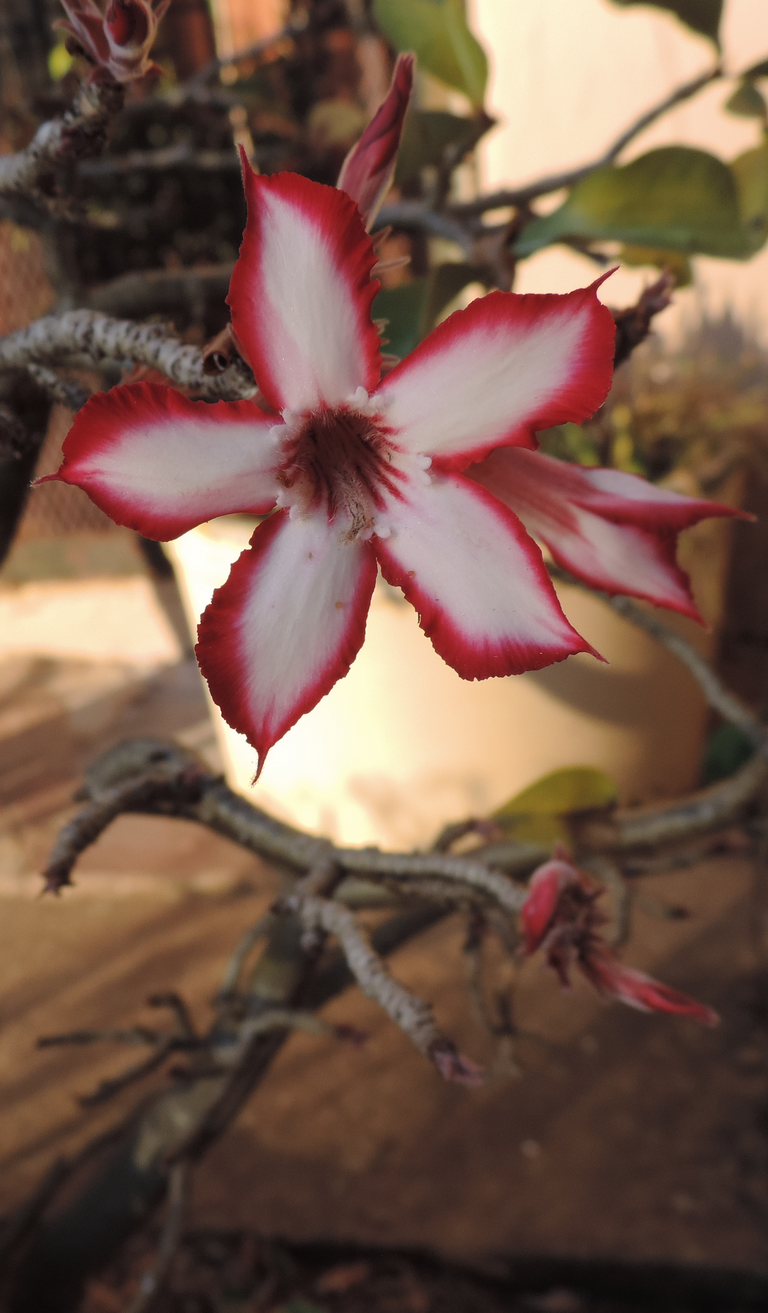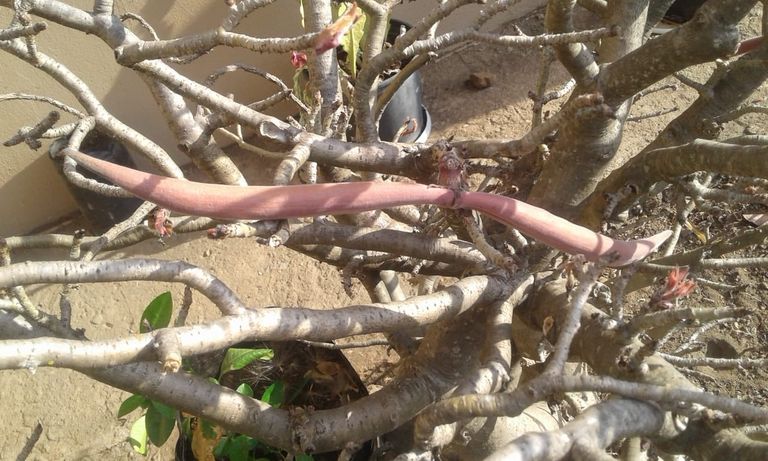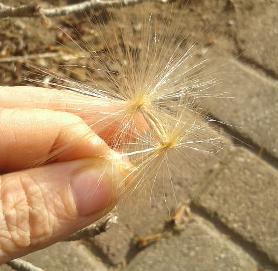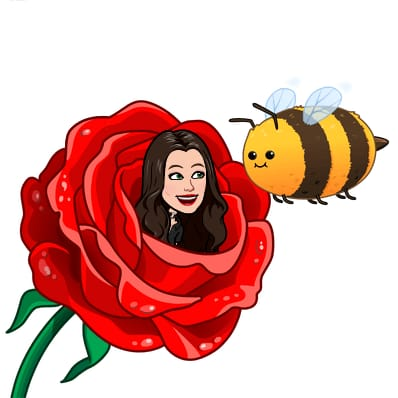Impala Lilly - A Treasure Trove Of Medicinal Wealth and Beauty Worth Preserving
Beauty, Magic and Medicine - What more could you ask for in a plant!

The Impala Lilly, also known as the Desert Rose or the Sabi Star is truly an amazing attribute to any garden willing to grow it.
This absolutely amazing plant is in fact a succulent tree that pretty much resembles a miniature baobab tree and is native to Southern Africa, and despite the fact that there is not really anything impressive about the appearance of this plant during the summer months, especially seeing that we get summer rain and this plant would remain hidden in a treasure trove of surrounding green gems and Acacia trees, however the Impala Lilly shares its time to shine with the winter zenith, and boasts with amazing brightly colored star flowers when the rest of the bush-veld lacks color.
With all of that being said lets have a look at some of the more interesting attributes of this lovely plant.
First of all I have to warn you that the watery latex that can be found in the bark and trunk of this plant is extremely poisonous, so much so that it has been used over the ages by the San and Khoisan people of South Africa as a poison for their arrows when hunting large antelopes.
What they did was extract the latex substance, that is now know to contain over 30 different chemicals that can affect the cardio function of the body. The bushmen would then apply this poison to the tips of their hunting arrows sometimes adding poisons from other plants as well, and once an animal has been pierced by such an arrow, they will not make it along a 100 meter stretch before meeting their end.
But this is not all bad, the Imapla Lilly as well as its summer counterpart has also been used medicinally for cures and treatments of various ailments. And some of its more common uses in Africa includes it being used as a treatment for snakebites as well as scorpion stings.
And further studies show that the plant might be conducive in the treatment of cardiac arrest when combined with the right other medicinal ingredients and given in correct dosages.
Over the world the plant has also been used to treat other ailments:
- In Arabia the Impala Lilly is used in traditional medicine to treat bone dislocations rheumatism, sprains, paralysis, swellings, wounds, skin infections.
- In Saudi Arabia and Yemen, the juice from the stem and crushed bark is applied on wounds.
- In Sahel, Africa, a concoction of roots, alone or in combination with other plants, is used for treatment of venereal diseases. Root or bark extract is used as bath or lotion for skin diseases and lice. Latex is used for decaying teeth and septic wounds.
- In Somalia, root concoction used as nose drops for rhinitis.
- In Kenya, latex is rubbed on the head for lice. The bark is chewed as abortifacient.
Others - In Senegal and Ethiopia, used as arrow poison.
- In Kenya, used for ethnoveterinary control of lice and fleas in livestock. Powdered stems used for skin parasites of camels and cattle.
The source of the above-mentioned international medicinal uses also gives a more in depth look at case studies and plant composition and additional information.
More than that the Impala Lilly is used for an array of magical potions used in various African cultures - but on that I don't have too much details - other than the plant being over harvested and widely sold on numerous muthi (magic/medicine) markets throughout South Africa.
As you can only imagine when it comes to a plant with such appeal for not only its beauty but also other wanted properties, the Impala Lily and especially so the summer Impala Lily has already been classified as a threatened species in some African countries such as, Swaziland and Zimbabwe. And even though the poaching of the plant for medicinal and horticultural purposes poses a real threat, the plants are also eaten by wild animals and even cleared out for agricultural purposes.
At the moment South Africa still maintains a stable population of the plant though - and I for one intend on doing my part to keep it stable.
Getting ready to harvest seeds:

The seeds of the Impala Lily are long velvety seedpods that bursts open once ready and dry to release tiny brown seeds attached to tufts of silky hair, ready to be whisked away by the wind. And in nature as it is now - especially in agricultural surrounds very little to none of the seeds will have the opportunity to germinate naturally where they end up landing, so in order to propagate these plants, a different approach is needed, especially seeing that the pods will only mature and seed on the mother plant.

(On the right you can see the fledged seedlings ready to be wind swept away)
So here is what I do when it is time to start harvesting the Impala Lily seeds, it is a simple solution, but it has worked for me over the years.
I simply take a piece of old silk stockings, and I pull it over the almost ready seedpods, then I tie a knot at the bottom so that it forms a closed sleeve over the pods, lastly I tie the stockings around the stem attached to the pods, tight enough to not come lose and gently enough to not hurt the plant.
This will then capture all the seeds once the pod bursts open. From here on out I will be germinating the seeds in some course river sand at first where-after I will be planting them out into planting bags filled with a combination of 1/3 compost 1/3 soil 1/3 potting soil. this will help the plant grow and strengthen until it is finally ready and strong enough to be planted out into the ground.

The thing is that so many known western medicines have origins of natural plant based sources, or has at least drawn inspiration from them, and if we loose entire plant populations that has known medicinal values that we have not explored to the full extent who knows what future cures we might be loosing along with them?


what a weird ass plant O,o ty for sharing it :)
hahaha, not so weird - it really is gorgeous. And it is my pleasure <3
Hello!
This post has been manually curated, resteemed
and gifted with some virtually delicious cake
from the @helpiecake curation team!
Much love to you from all of us at @helpie!
Keep up the great work!
Manually curated by @torico.
@helpie is a Community Witness.
Aw thank you so much - I really do appreciate the kind support
To listen to the audio version of this article click on the play image.

Brought to you by @tts. If you find it useful please consider upvoting this reply.
Congratulations @breezin! You have completed the following achievement on the Steem blockchain and have been rewarded with new badge(s) :
You can view your badges on your Steem Board and compare to others on the Steem Ranking
If you no longer want to receive notifications, reply to this comment with the word
STOPDo not miss the last post from @steemitboard:
Vote for @Steemitboard as a witness to get one more award and increased upvotes!
This post was shared in the Curation Collective Discord community for curators, and upvoted and resteemed by the @c-squared community account after manual review.
@c-squared runs a community witness. Please consider using one of your witness votes on us here
Hi, @breezin!
You just got a 0.58% upvote from SteemPlus!
To get higher upvotes, earn more SteemPlus Points (SPP). On your Steemit wallet, check your SPP balance and click on "How to earn SPP?" to find out all the ways to earn.
If you're not using SteemPlus yet, please check our last posts in here to see the many ways in which SteemPlus can improve your Steem experience on Steemit and Busy.
My little plant is getting new leaves at the moment, have not seen the pods yet still a young immature plant.
Thanks for tips on how to grow, I love the cheerful flowers these have, now learning more about this will make it another plant to research further into @breezin
Have you heard the news about #steemsa if you are interested please read here https://staging.busy.org/@jaynie/proudly-introducing-steem-south-africa
Hey there Joan, yeah it is an amazing plant... I have some winter and summer ones, I also have some khudu lilies which are similar (they are the ones with the thorny bark.)
I did go have a look at the article on the link you sent me, but I just cant seem to figure out what the purpose is. Maybe I am just a bit slow, so many changes happening simultaneously. I did end up joining Jaynie's server though
Very few people arrive in the original TeamSouthAfrica only admin arrive and hands are tied to alter anything. @Jaynie applied and has been accepted to run a Regional South Africa which will open up at #steemsa
Thanks for sharing:)
Pleasure